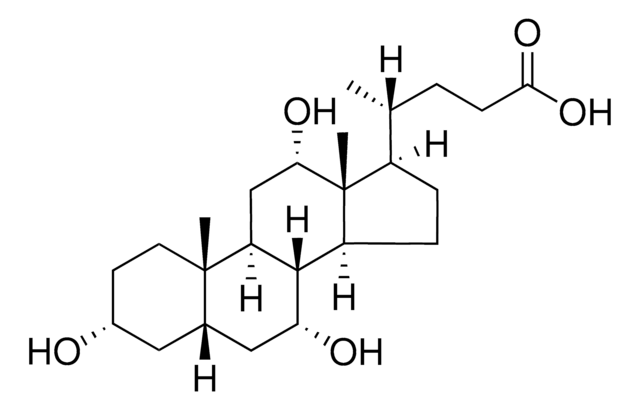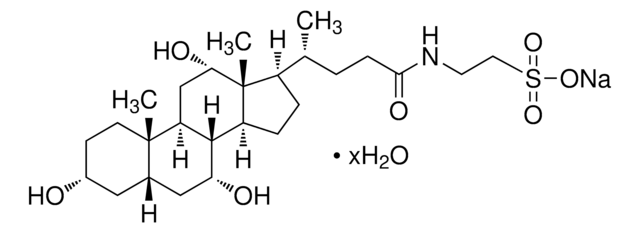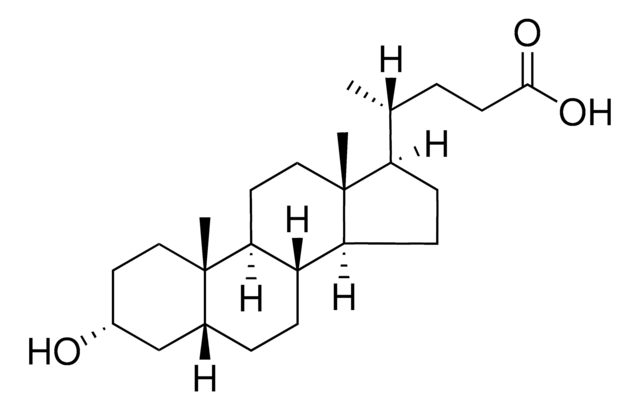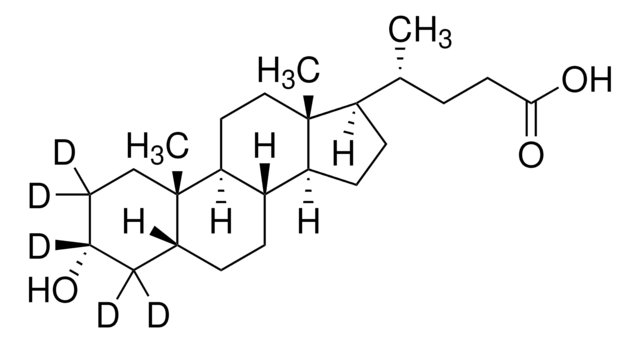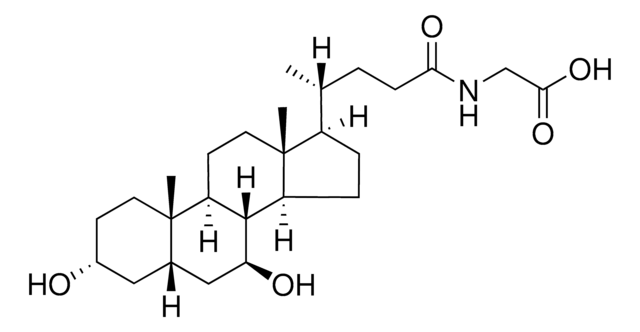L6250
Lithocholic acid
≥95%
Synonym(s):
3α-Hydroxy-5β-cholan-24-oic acid, 3α-Hydroxy-5β-cholanic acid, 5β-Cholan-24-oic acid-3α-ol
About This Item
Recommended Products
biological source
bovine bile
synthetic
Assay
≥95%
mol wt
376.57 g/mol
mp
183-188 °C (lit.)
functional group
carboxylic acid
shipped in
ambient
storage temp.
room temp
SMILES string
[H][C@]12CC[C@@]3([H])[C@]4([H])CC[C@H]([C@H](C)CCC(O)=O)[C@@]4(C)CC[C@]3([H])[C@@]1(C)CC[C@@H](O)C2
InChI
1S/C24H40O3/c1-15(4-9-22(26)27)19-7-8-20-18-6-5-16-14-17(25)10-12-23(16,2)21(18)11-13-24(19,20)3/h15-21,25H,4-14H2,1-3H3,(H,26,27)/t15-,16-,17-,18+,19-,20+,21+,23+,24-/m1/s1
InChI key
SMEROWZSTRWXGI-HVATVPOCSA-N
Gene Information
human ... POLA1(5422) , TOP2A(7153)
rat ... Polb(29240)
Looking for similar products? Visit Product Comparison Guide
General description
Application
Biochem/physiol Actions
Storage Class Code
11 - Combustible Solids
WGK
WGK 2
Flash Point(F)
Not applicable
Flash Point(C)
Not applicable
Personal Protective Equipment
Choose from one of the most recent versions:
Already Own This Product?
Find documentation for the products that you have recently purchased in the Document Library.
Customers Also Viewed
Articles
Isobaric separation of bile acids and conjugates by LC-MS/MS on Ascentis® Express C18 column with excellent resolution and linearity.
Protocols
This method is particularly useful in research into the role of individual bile acids as signaling molecules; suitable for clinical laboratories to investigate potential mechanisms linked to gut hormone profiles and glycemic control.
Our team of scientists has experience in all areas of research including Life Science, Material Science, Chemical Synthesis, Chromatography, Analytical and many others.
Contact Technical Service


